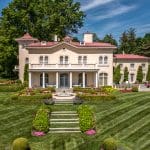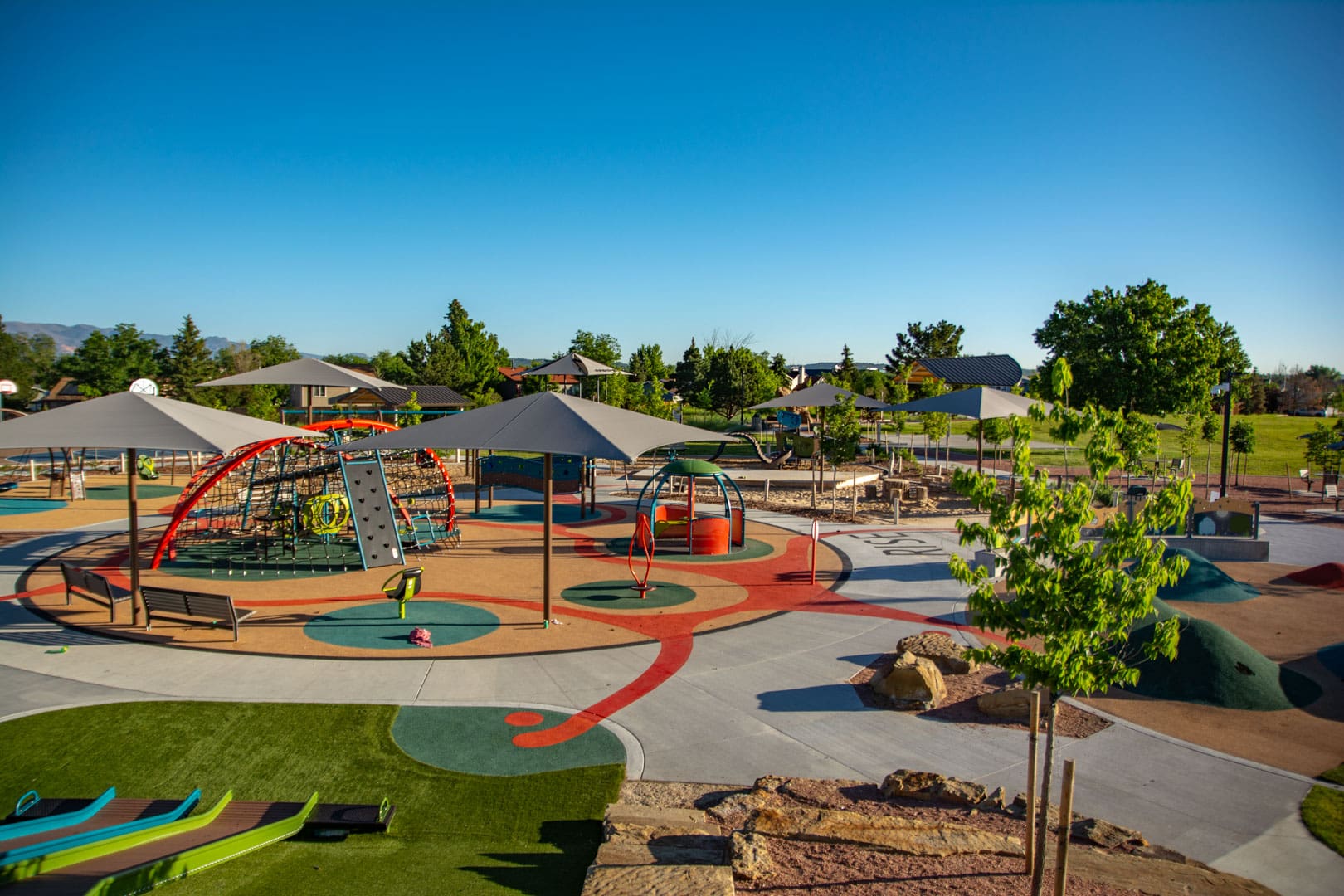
Before its renovation, Panorama Park in Colorado Springs, Colorado, was an underwhelming public space with few amenities and little upkeep. As the city made plans to transform the park, they chose to partner with Timberline Landscaping, based in Colorado Springs, to install many of the new features for the park and serve as the general contractor.
Overall, this project aimed to create a safe community destination for residents on the city’s southeast side while adding numerous amenities, like a bike park, event lawn, splash pad, and artwork.
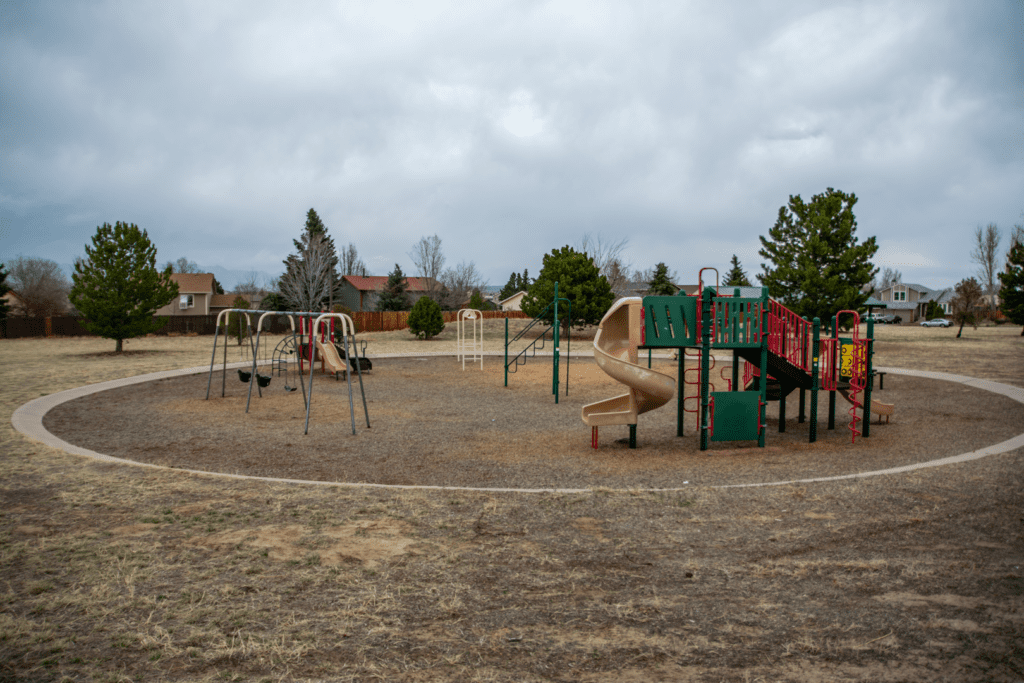
Photo: Timberline Landscaping
Cameron Emick, project manager for Timberline Building Systems, shares what it means to win a Gold Award of Excellence in 2023 for Panorama Park: “It’s an incredible honor for the Timberline team to have won this award, and it is evidence that we are doing things right in our company. Our vision is to lead the intelligent transformation of environments into unique, enriching, and enjoyable experiences.”
Timberline was involved in many aspects of the installation, with grading and stormwater management being crucial tasks.
Previously, the park had been a flat, sandy area with many weeds. One area of concern was water runoff, so the new plans called for various contours and swales to direct the water without disturbing the park’s new features.
“We really have to give credit to Stream Landscape Architecture and Muller Engineering for designing such an intricate and interesting stormwater system,” Emick says. “While your typical stormwater drainage system has straight ditches and a rectangular-shaped detention pond, the system at Panorama Park has meandering swales, naturally shaped detention ponds with islands, and more than your typical number of trees planted on the banks of the ponds. It also has a bike track that snakes through the pond without interrupting the purpose of the pond.”
Directing the water was a significant focus in accounting for the new features in the park. One example is the basketball court.
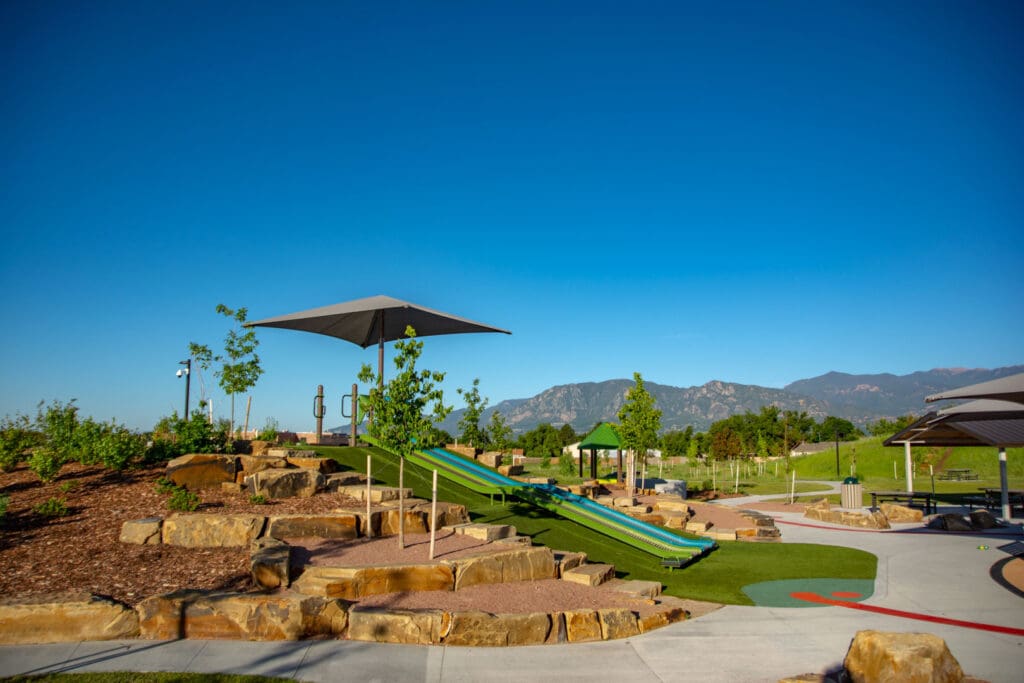
“The basketball court had shown that a 2% slope was required from end to end,” Emick says. “While normally 2% is a mild slope, over the distance of a basketball court (92′), it meant nearly a 2-foot difference in elevation between the two hoops, creating an advantage for one of the teams. We worked with the city and the architects to change the slope to 1% and properly adjust the adjacent features to ensure all the water continued draining as designed.”
With such a complex design, Timberline used various equipment to change the site’s topography.
“It was a challenge to create many of these drainage features, but with the use of GPS-integrated equipment, we were able to bring the designers’ vision to life with precision and ease,” Emick says. “During construction, we utilized several industry-standard methods for directing the water while preventing sediment from leaving the worksite. We used erosion control logs and GeoRidge as check dams in the swales. We also used silt fence as perimeter control and Dandy Bags to protect our drain basins.”
Another challenge was minimizing the impact of traffic on neighbors and the school during the construction.
“We tracked over 100 individuals with 18 different contractors that stepped foot on this project to complete part of the many specialty items, with Timberline employees making up about 30 of those,” Emick says. “We conducted weekly meetings that included a neighborhood representative, and we would give the school at least one week’s notice before starting any work that would impact their operation. We worked with the city traffic department to ensure we used proper traffic control when roadwork was required, and we also installed a temporary 6′ chain-link fence around the entire perimeter of the park while leaving open common walking paths for the students and neighborhood to still navigate around the park.”
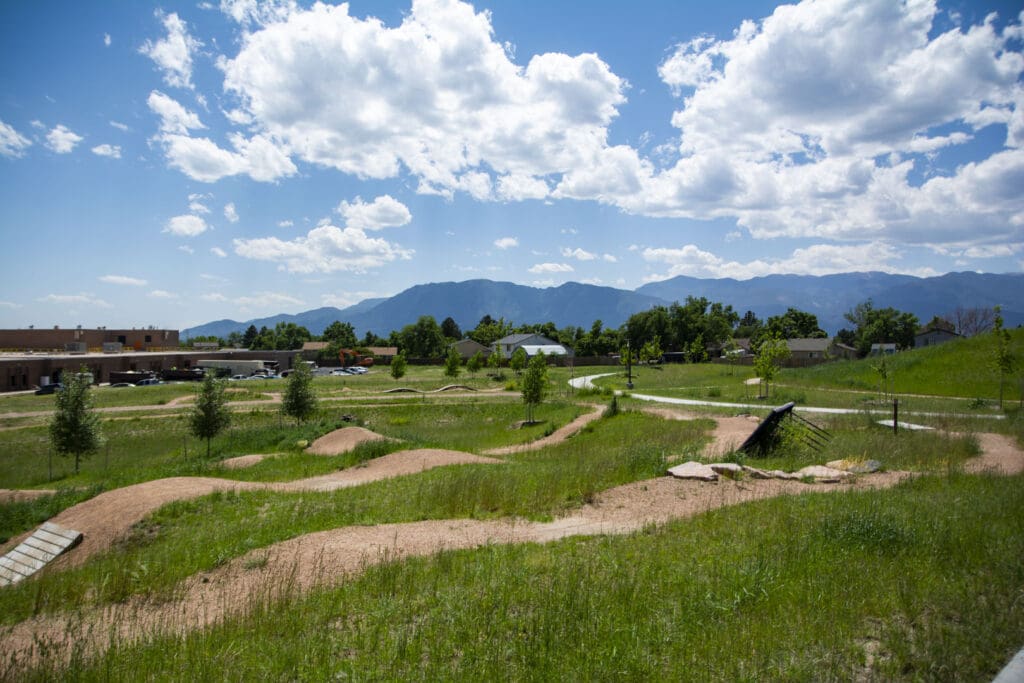
Another critical task for Timberline was installing the new landscape. Since the 1990s, drought has been a growing problem in Colorado, so a large focus was placed on providing water conservation and shade using native, drought-tolerant plants.
“The biggest example is the area of native seed grass compared to the area of Kentucky bluegrass (KBG),” Emick says. “58% of the park’s surface area is native while only 24% was bluegrass, compared to older parks where bluegrass makes up 60%-70%. The park originally had about 30 trees, and about 20 needed to be removed because they were invasive species, were of poor quality, or were simply in the way of the new features. The original large maple and pine trees were left to provide shade around the new pavilion, while we planted nearly 260 new trees in this 13-acre area. There are over 20 new species of tree planted in the park, including oaks, maples, cottonwoods, pinyon and ponderosa pines.”
Timberline Landscaping was also responsible for installing several boulder features, including a stairway, terrace, and walls. They also added shade structures throughout the park and a gazebo.
As the project was completed, the renovations began to pay off.
“Seeing the joy and excitement this park brought to the children, adults, and surrounding neighborhood was incomparable, and it made all the hard work worth it.” Emick says. “The park is a huge success just by seeing the number of daily visitors and the nearly 200 positive reviews that have been left online. They have already had dozens of events take place at the park, and the amount of community engagement has increased exponentially.”
Interested in participating in the Awards of Excellence? Enter your projects by July 29, 2024.


